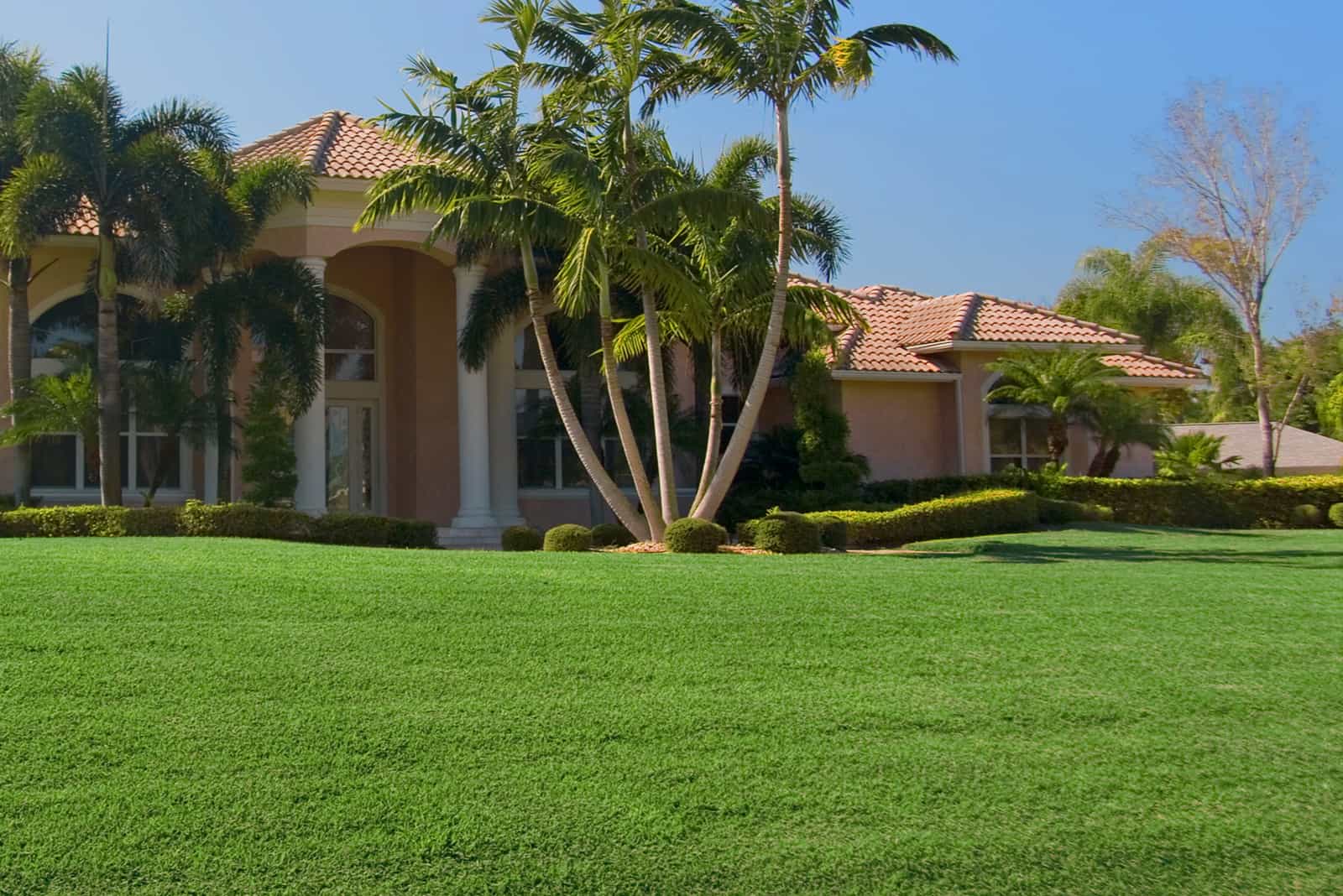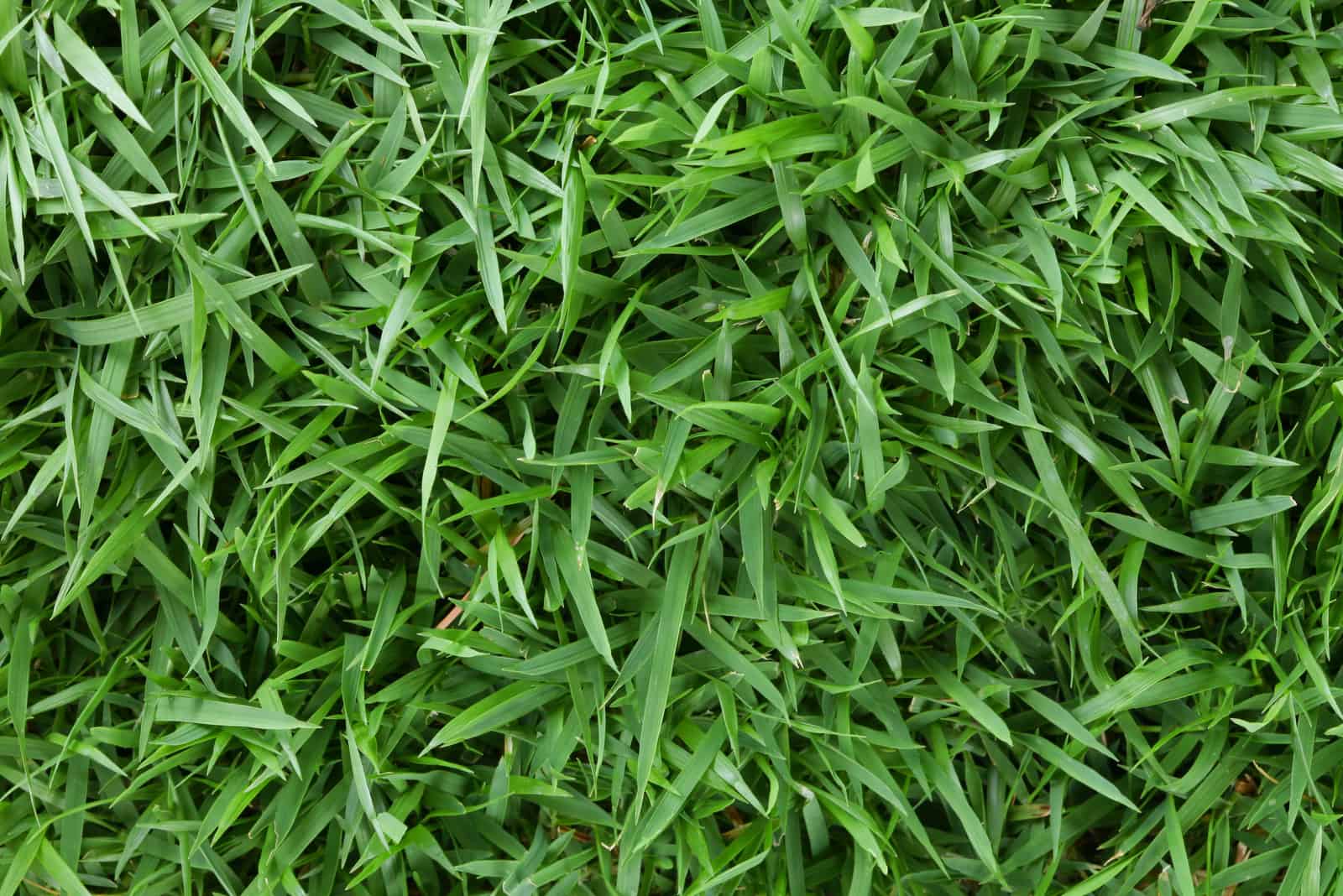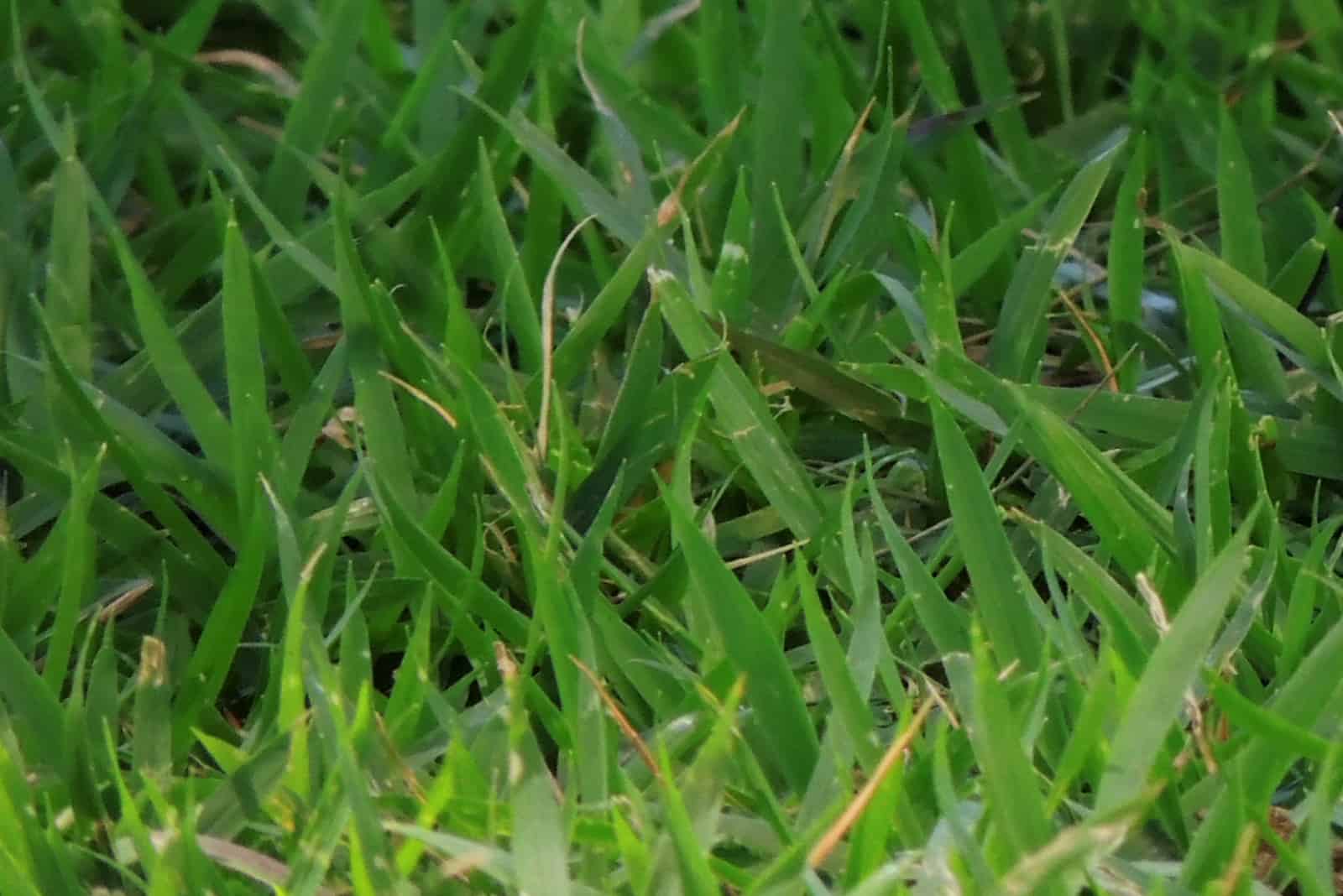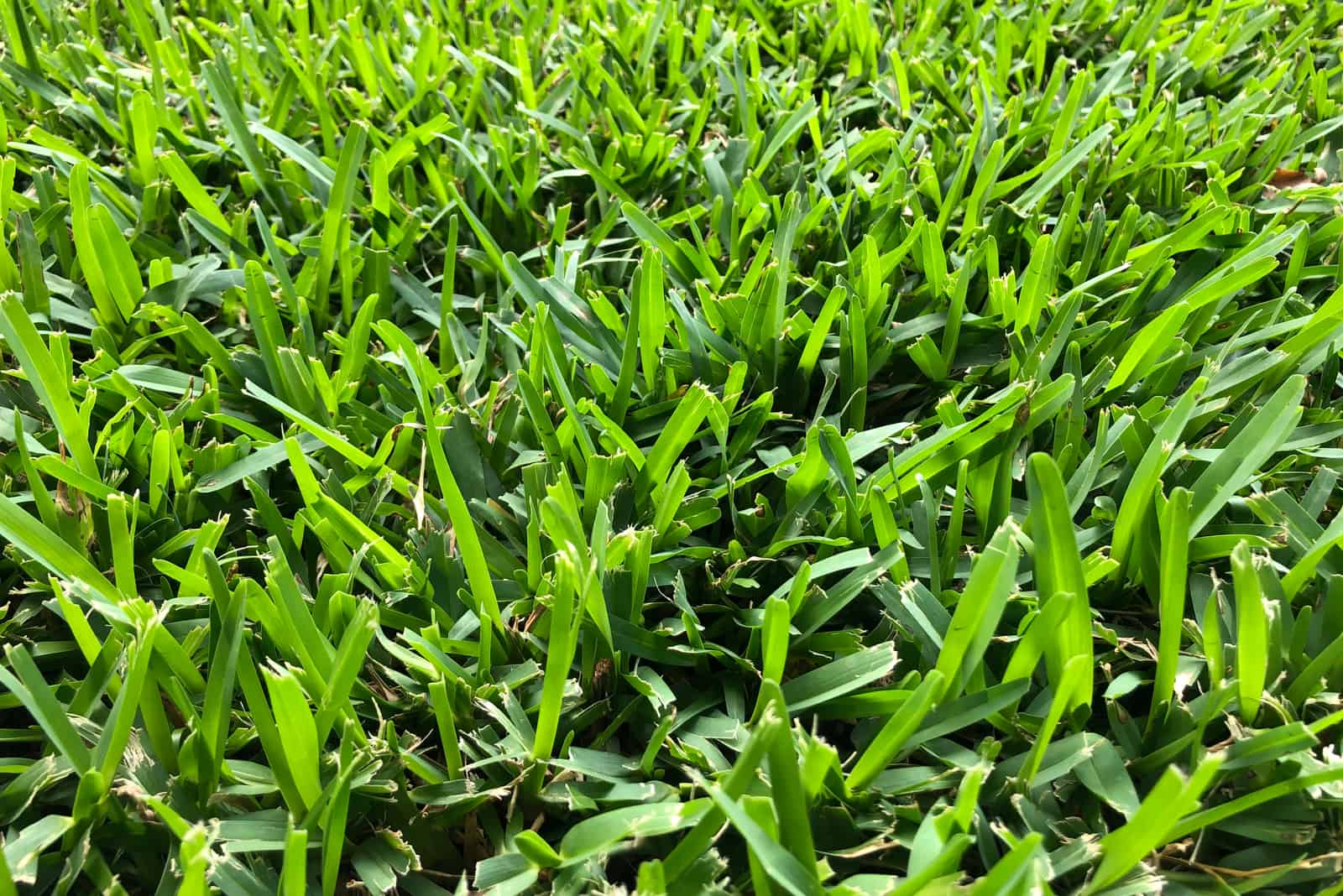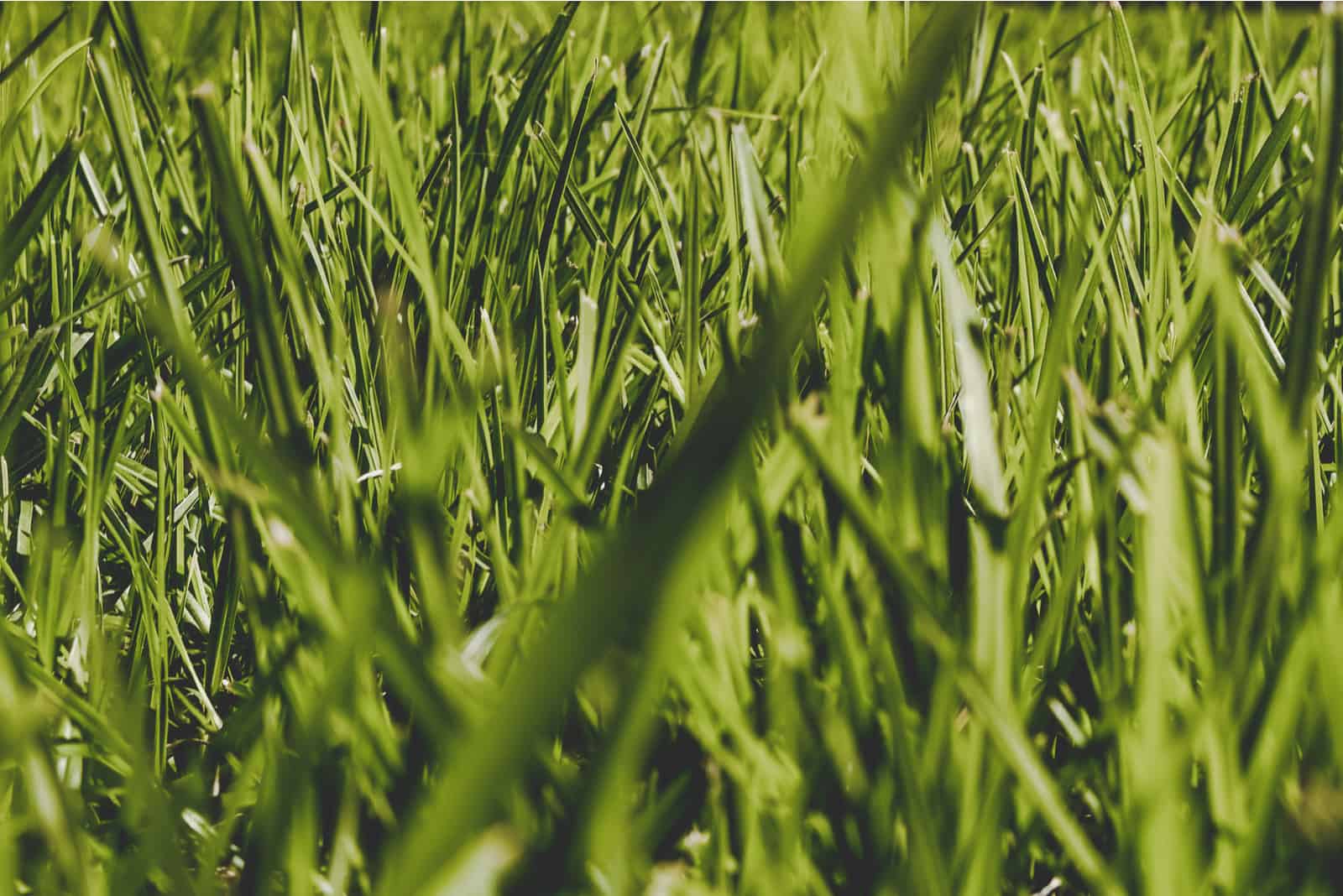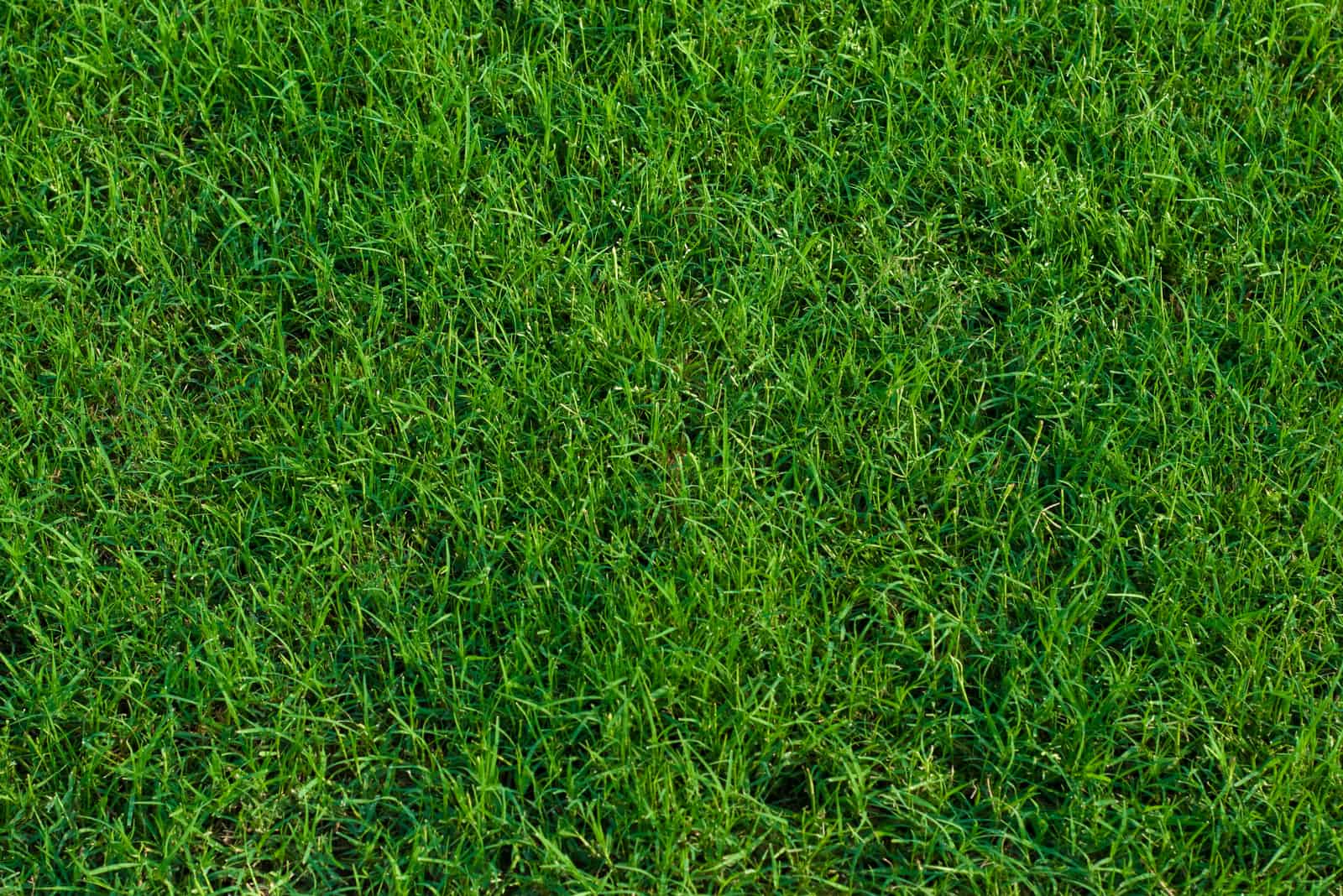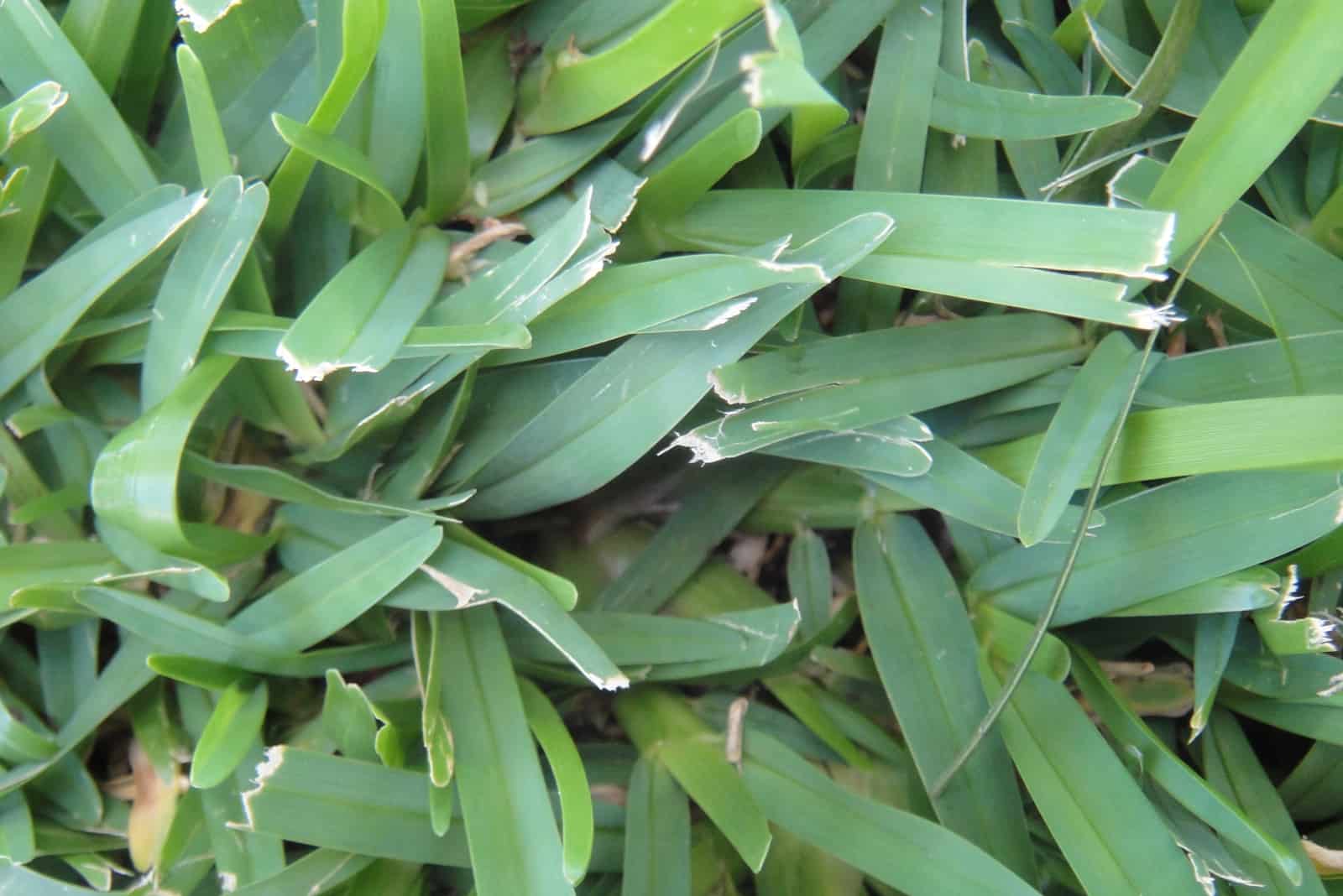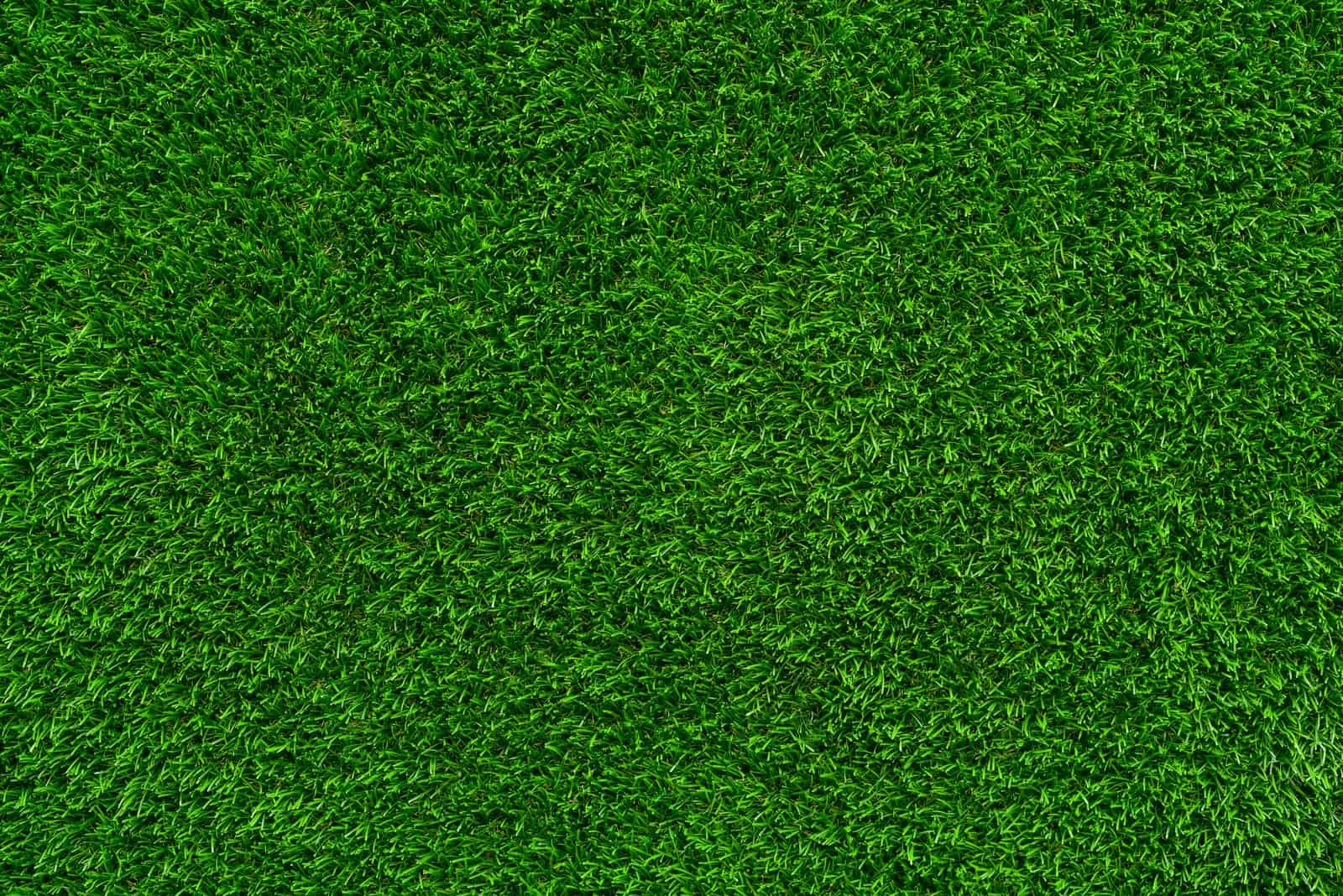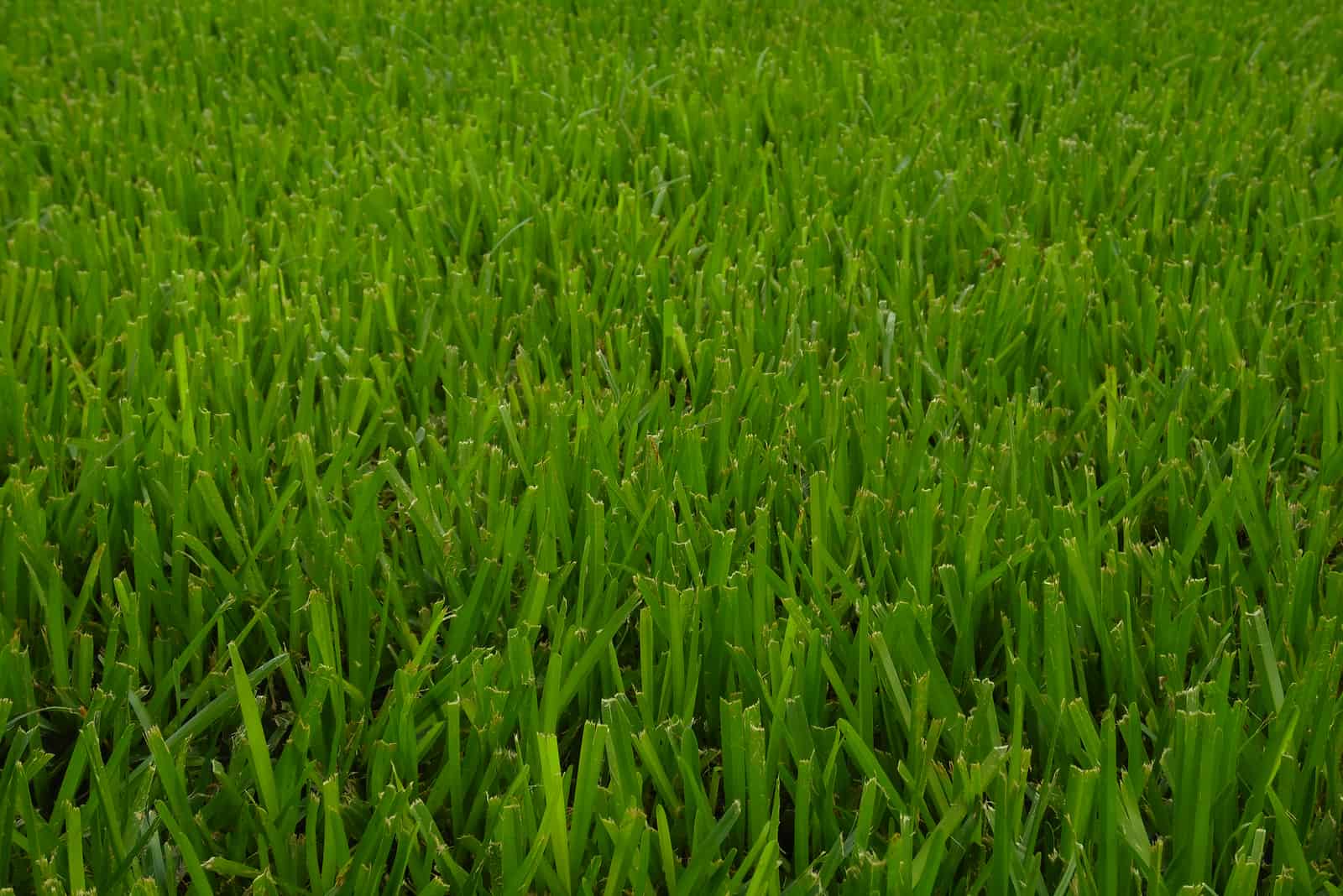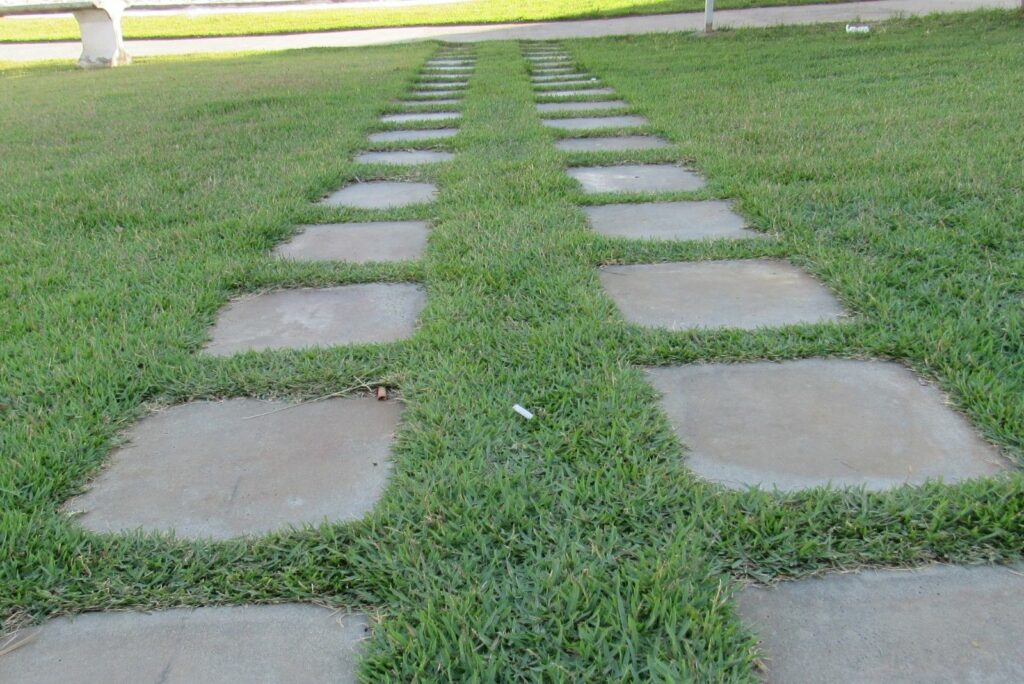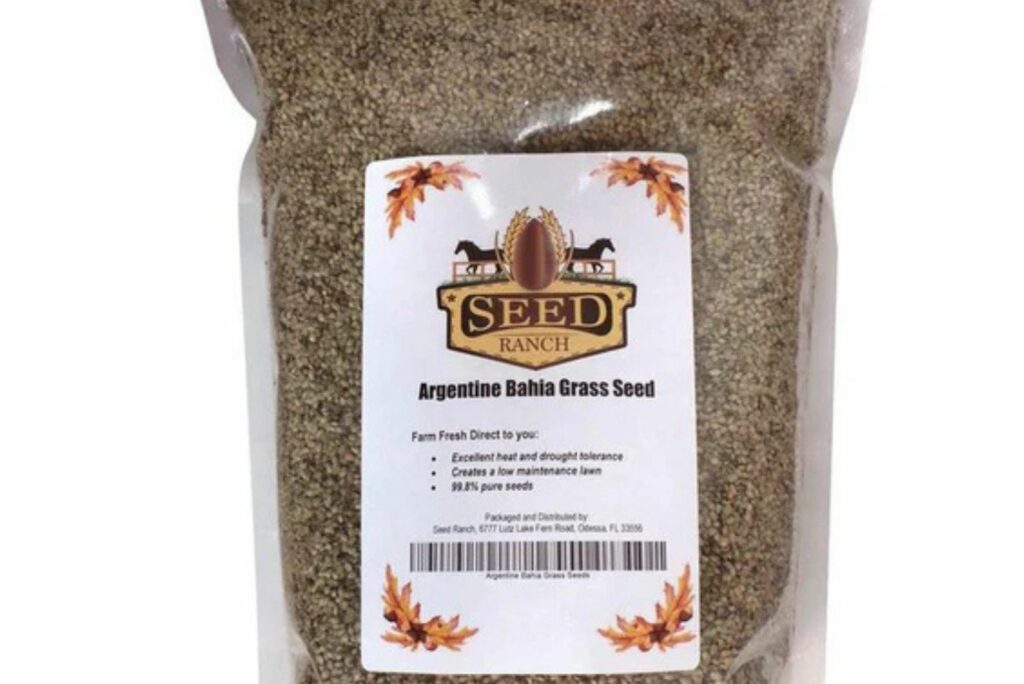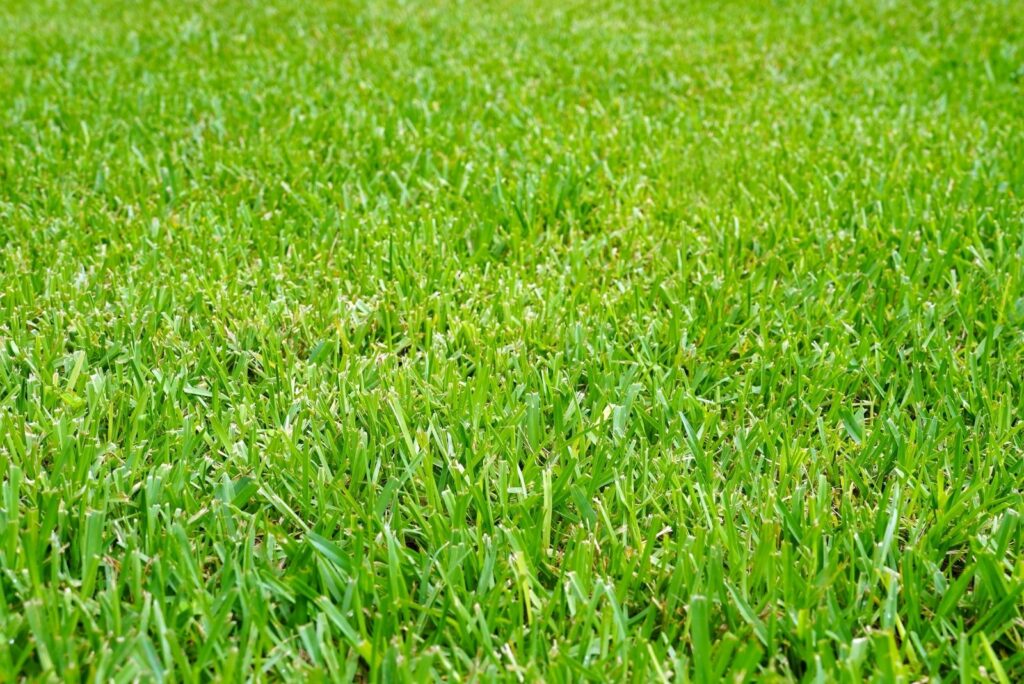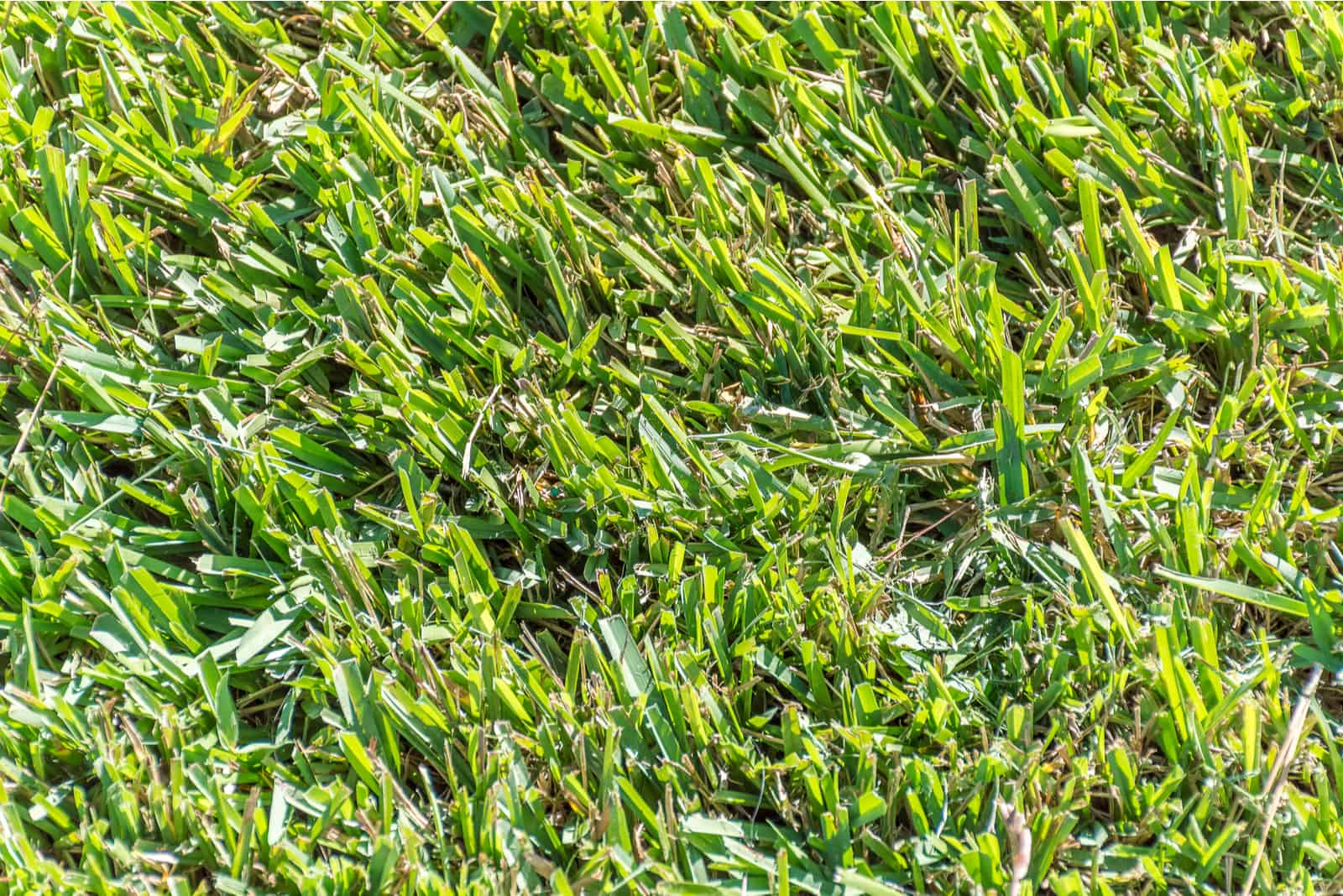If you live in Florida, then you are probably painfully aware of all the climate challenges the area faces – intolerable humidity, constant raining, blazing heat, and even hurricanes!
This makes it pretty difficult to find the perfect dark green and durable type of grass for your Florida lawn.
You should also include the pH of the soil and irrigation type in your decision making process.
All of these combined can be really demanding, but it’s definitely worth the trouble to have the best lawn in the neighborhood!
The grass will always be greener on your side of the fence if you continue reading this article to help you choose the best grass type for Florida!
The Best Types Of Grass In Florida
After taking into account all the factors that influence Florida grass, we have come to the conclusion that these 7 grass types are the best and easiest to grow in Florida.
1. Zoysia grass
If you are looking for a magnificent, dark to medium green, drought tolerant, and low maintenance grass, then Zoysia grass is the right choice for you!
It is not too picky about location either; it enjoys being in both full sun and partial shade.
Zoysia grass is considered to be one of the best types for areas with high-traffic, such as golf courses or sports fields.
If you are a golfer, then you will have already experienced the smoothness of this grass.
Homeowners often choose this type of grass when they don’t want to spend too much time maintaining their lawn, mainly because Zoysia grass is a turfgrass that prevents weed growth, requires minimum water and fertilizers, and is resistant to common pests such as chinch bugs.
You can use 14-14-14 fertilizers, they are great for dry grasses.
The only drawback is its dormant growth during frost, but it eventually starts growing again when the soil temperature is around 70 degrees.
2. Bahia grass
Bahia grass, also known as Paspalum notatum, has become a popular choice among Florida homeowners. This grass seems custom-made for that crazy Florida weather!
This delicate green grass can survive in hot and dry climates, but it can also tolerate cooler temperatures.
During drought periods, its growth is dormant, but the deep roots in sandy soil enable Bahia grass to survive the drought.
Pensacola bahia grass can be a bit needy when it comes to lawn care. Even though it requires a little irrigation and fertilizers, it also requires frequent mowing. Mower blades can be damaged due to the coarse texture of the grass, so be careful.
Grasses like Bahia grass cause problems in Spartan mowers quite often.
Weeds also tend to make an appearance in this grass type, so you should be on the lookout for that too!
3. St. Augustine grass
St. Augustine grass is a hot topic among homeowners in Florida.
If you are considering planting this type of grass, you will probably have to mow this fast-growing grass more frequently, which is the only drawback. Otherwise, you are going to love it!
You can follow this video and learn some great tricks about planting grass seeds: https://www.youtube.com/watch?v=1Z_id3Mg-jk
Floratam and Palmetto are common grass types in Florida, which are derived from St. Augustine grass lineage.
Floratam St. Augustine grass
This type of St. Augustine grass has soft leaf blades and coarse texture, making it comfortable to walk on barefoot. The kids will love playing on it!
The lighter green grass color makes your backyard look simply heavenly.
When it comes to soil types, Floratam St. Augustine grass prefers slightly acidic soil as it helps the roots to absorb nutrients and water.
This warm-season grass grows significantly more during the summer rather than during cooler seasons, so you will be busy mowing the lawn more frequently to maintain the ideal mowing height of 3 inches.
If you were wondering why does it seem like the grass has grown significantly over night, check out does grass grow at night and find out the answer!
In addition, Floratam is more susceptible to pests and insects when compared to Palmetto. Seriously, insects love it!
It was originally resistant to chinch bugs, however those little troublemakers have evolved and are able to invade almost any type of grass these days.
Palmetto St. Augustine grass
The first thing you should know about Palmetto St. Augustine grass is that it is the most sold type of grass in the world!
The main reason for this high-demand grass is its adaptability to grow under different climate and soil conditions.
Whether it’s the blue-green color of the grass, its fine texture, or the dense turf, this grass will make your new lawn look amazing!
Is the grass bluer on the other side in this case?
Who knows, the most important thing is that the view is very appealing.
Owing to its deep root system, it exhibits higher levels of cold, frost, drought, and heat tolerance. It is also well known that this grass type in Florida has the best shade tolerance when compared to others.
4. Buffalo grass
Buffalo grass prefers high temperatures, which is perfect as the weather in Florida can get really hot.
It has a blue-green color and can tolerate different pH levels of soil.
However, it barely has any shade tolerance, so Buffalo grass might not be the right grass for you if your yard is partially shady.
Another drawback is that it’s not suitable for foot traffic areas, though it has dainty curling leaf blades.
If you plant this grass seed, you should keep the mowing height about 1.5 to 3 inches and avoid overwatering.
5. Bermuda grass
If you are looking for the best drought-resistant grass, then Bermuda grass is the right choice for you!
Often used on sports fields, this grass can tolerate high-traffic and direct sun while still looking beautiful and intact.
The green-gray color makes this grass unique, and it is often used to decorate the garden.
Additionally, it can rapidly grow in different soil types and produce seeds.
However, homeowners tend to avoid Bermuda grass in Florida as it can become invasive if not maintained properly.
In case that you are absolutely thrilled about Bermuda grass, click here to find more about how to take care of a Bermuda grass.
6. Centipede grass
Centipede grass is one of the cool-season grasses. It thrives in cooler temperatures and does not like being in the sun at all!
This grass type is perfect for a low-maintenance lawn as it grows slowly and requires less fertilizers.
However, this light-green grass has a preference for acidic soil, and tends to develop thatch as well.
It can not withstand being walked on, so if you see a sign that says not to walk on the grass, it might be Centipede grass.
7. Carpet grass
Carpet grass is a type of turfgrass that is usually grown where other grass types in Florida tend to fail.
It is a warm-season grass that can tolerate being in partial shade, which is why gardeners often choose it for dark and soggy areas of the lawn.
This low-maintenance grass doesn’t have to be fertilized that often, however it should be mown more frequently.
Carpet grass is often used as a carpet for many parks, airports, and along roadsides as it can withstand high-traffic.
Rapid seedhead production is a major drawback.
Frequently Asked Questions
1. What is the easiest grass seed to grow in Florida?
The easiest grass to grow in Florida is Bahia grass. It does not have a soil preference and requires annual fertilization. However, it should be mowed every two weeks.
2. When should I plant grass seeds in Florida?
The most optimal time would be from April to May. This period will allow your grass to grow until the end of the growing season. In case that you don’t end up spending all grass seeds in one season, check out can they go bad and how to store them.
3. What is the most durable grass in Florida?
Bahia grass. This hardy grass can tolerate many soil and climate conditions, which makes it perfect for Florida.
4. Can I mix Bermuda and St. Augustine?
Yes, you can mix these two types. Bermuda grass is usually mixed together with St. Augustine grass to fill patches in the lawn, mainly because it is not expensive and spreads quickly.
Conclusion
Choosing the right grass for your lawn is a tough decision. Many factors should be included, such as soil conditions, climate challenges, and grass requirements.
If you are busy and don’t have time to mow your lawn every Sunday, then you should definitely plant Centipede grass seeds, which is the perfect type for a low-maintenance lawn.
If you want your garden to look more appealing and lively, then you can’t go wrong with St. Augustine grass.
Whether you want a more durable grass type, or grass with finer textures, the choice is yours.
Before planting any grass type in Florida, be aware of your soil type and pay attention to the climate in your area.
You should definitely install sprinklers! It will save you a lot of time and trouble.
Until next time!
Like this post? Share or pin it for later!

